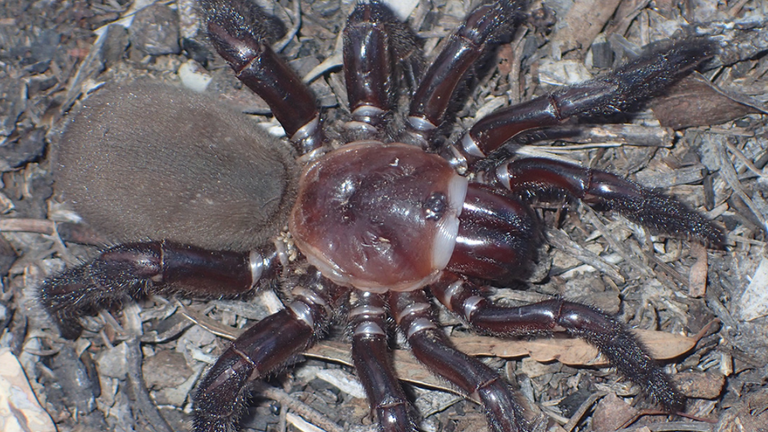A new ‘rare’ species of giant trapdoor spider has been discovered in Australia.
The large eight-legged arachnid was so large that it was named “Euoplos dignitas” — Latin for dignity or greatness — in honor of its “impressive” size.
Female spiders are typically larger than males, reaching up to 5 centimeters in length, the researchers said.
“It’s a huge and beautiful species,” said one of the lead researchers, Dr Michael Ricks, curator of arthropodology at the Queensland Museum.
However, scientists say the chances of encountering a spider are quite low.
The spider lives in open woodland habitats and burrows in the black soil of the Brigalow Belt in central Queensland, on Australia’s northeast coast.
However, these woodlands have been fragmented over 150 years of human development and now include some of Queensland’s most threatened ecological communities.
The spider, which can live up to 20 years in the wild, has lost much of its habitat to land reclamation, likely making it an endangered species, researchers say.
It is known to exist in very few places around the country towns of Eidsvold and Monto.
read more:
More than 220 species of flora and fauna found in the Greater Mekong
New species of owl found on Africa’s west coast
According to Dr Rix, the female spiders of the new species spend their lives underground, while the males, described as having a “honey red” color, leave the burrow to find a mate after about five to seven years.
Mostly nocturnal, the spiders sit by trapdoors in their burrows, waiting for insects to pass through before striking.
They use venom to subdue their prey. However, Dr Ricks said they were not dangerous to humans.
In a video released to announce the discovery, Dr Ricks said experts were delighted to “scientifically document this new species”.
Dr Jeremy Wilson, research associate in arachnology at the Queensland Museum Network, said naming a new species had a positive impact on its real-life implications, as a known species meant “it could be protected” .
The research was carried out with support from the DIG project, a five-year partnership between the Queensland Museum Network and mining company BHP Billiton.
